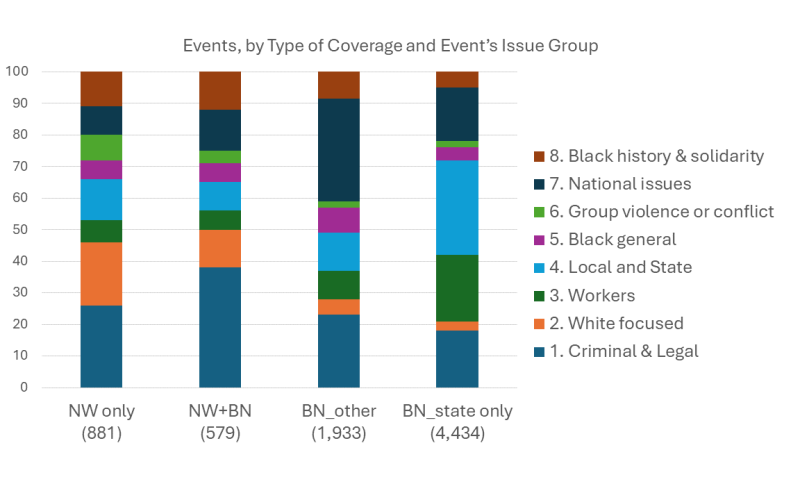My research team just posted a working paper that compares Black newspapers and mainstream newswires in their coverage of Black American protest events. In this paper we are just trying to lay out the big patterns we see in the data so we can do more work to refine the analysis. Honestly, the paper itself is kind of a slog unless you are interested in the topic and can read numerical table, but I’m hoping there are a few people who will be interested. Link to the paper (which you can download as a PDF) : https://osf.io/preprints/socarxiv/tceyu
We identified 7,748 Black-relevant protest-relevant events for 1994-2010 from 1,286 mainstream newswire articles from three newswire sources and 4,670 Black newspaper articles from 37 newspapers archived in Ethnic NewsWatch.
I made some slides for a short presentation of the main results that will you an idea of what we’ve been looking at.
The first finding is that there is very little overlap. It is not surprising that most events (81%) were reported only in Black newspapers, as we searched more of them, but the majority (61%) of the Black protest events reported in newswires were not mentioned in our Black newspapers. This means that the two source types were interested in and attentive to different event types.
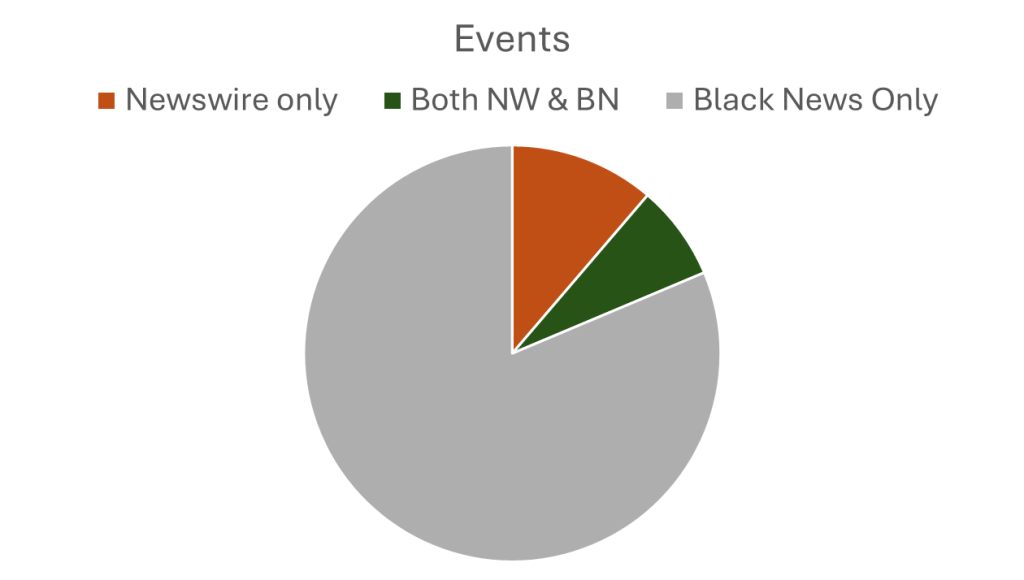
Part of the difference is that the Black newspapers had a more local focus, so we examine Black newspaper coverage of events in the same state or city where the newspaper is published versus the event being in a different state from where the newspaper is published. 56% of the events received only “local” (that is in-state) Black newspaper coverage, 24% were covered only in Black newspapers but had at least some non-local coverage, 7% were covered by both newswires and Black newspapers, and 11% were covered only by newswires.
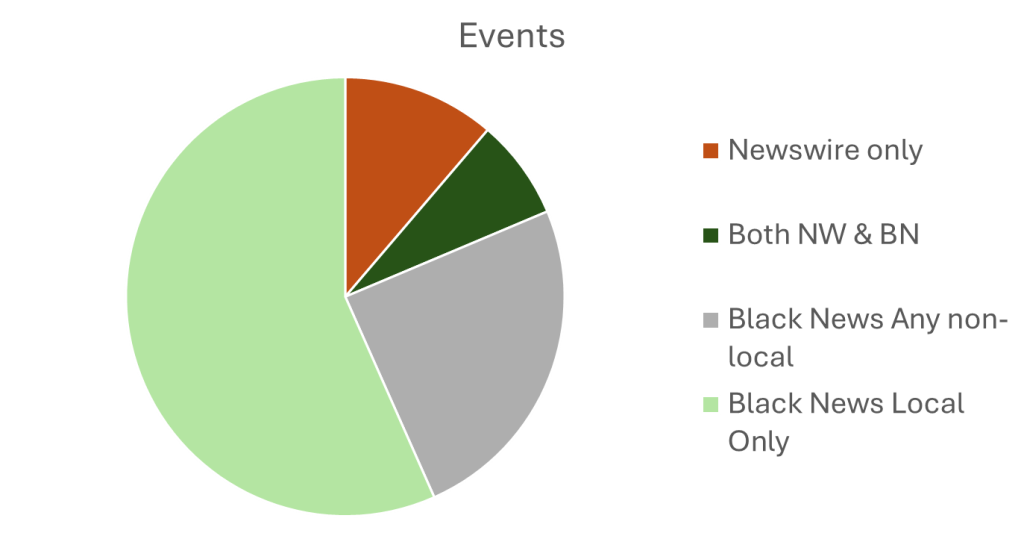
We look at the issues that the different source types focused on.
These are the broad issue groups that the newswires had a higher proportion of: (1) Criminal & legal issues, (2) what we call White focused (see next graph), (6) Inter-group violence, and (8) Black history and solidarity.
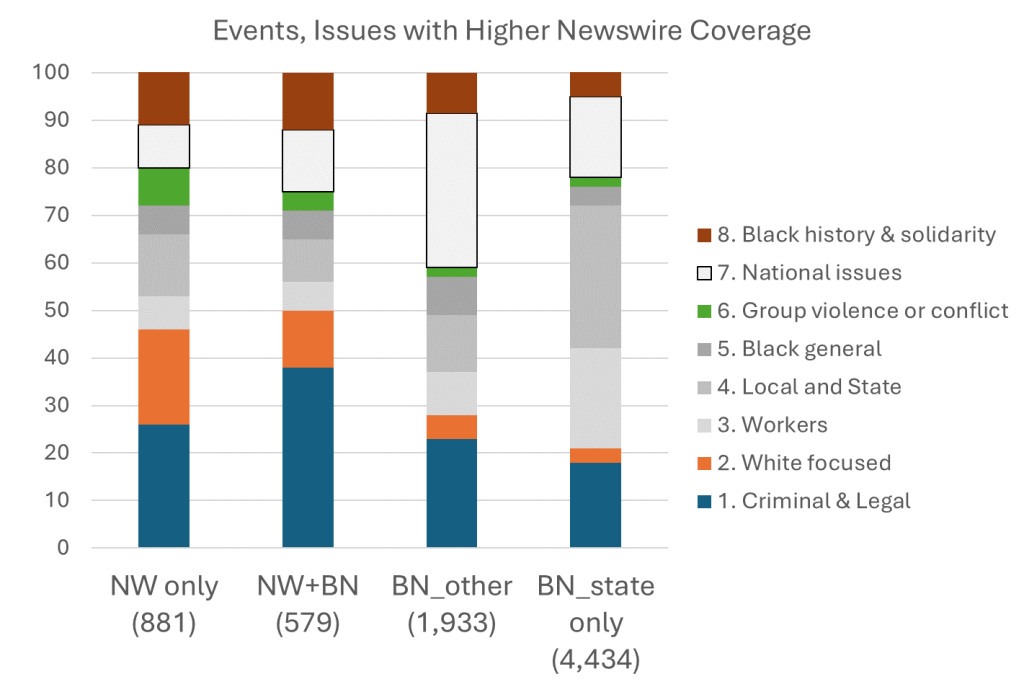
Looking at what we call White-focused issues (graph below), we find that the newswires were much more interested in events about Confederate symbols than Black newspapers were, and also more interested in White identity groups like the KKK or Nazis. Black newspapers and newswires both covered events about affirmative action, but these were a smaller proportion of the total than for newswires.
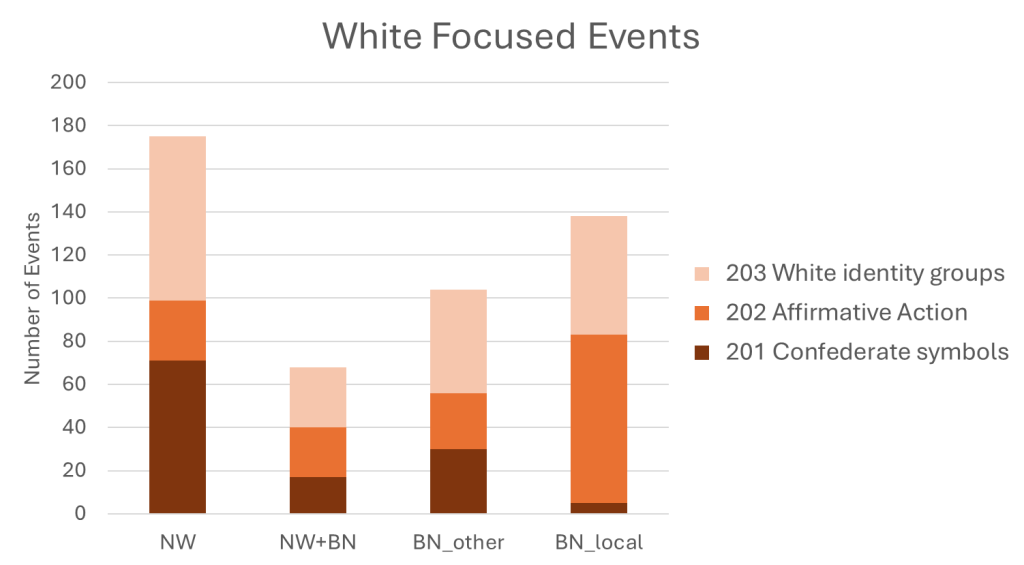
Looking at the criminal legal issues (below), both newswires and Black newspapers had substantial interest in them. Both source types covered events about specific incidents of police violence, but Black newspapers gave more coverage of other criminal legal issues including police brutality or violence as a general issue, protests calling for the release of Mumia Abu-Jamal, protests about the Jena Six, and many other issues.
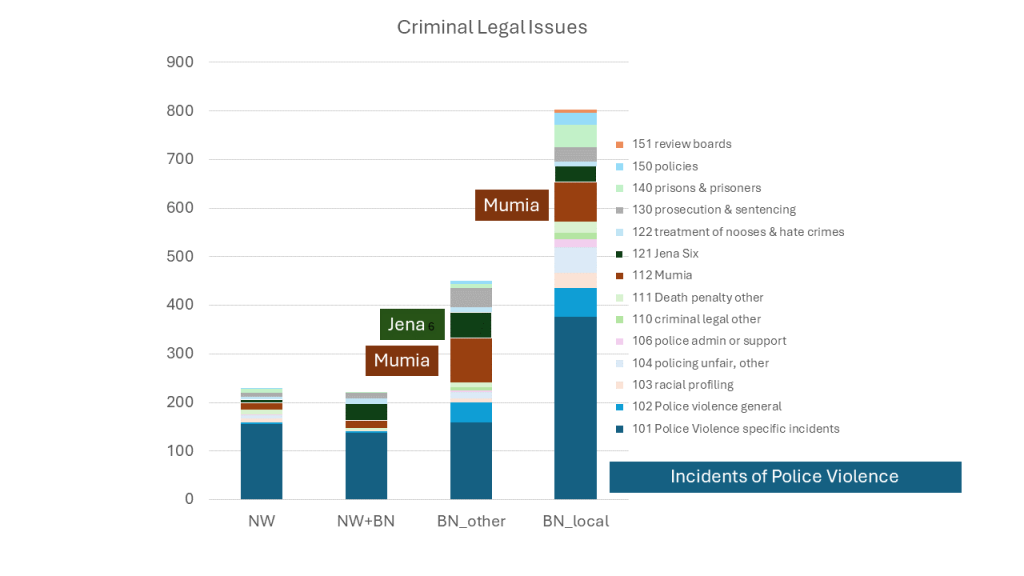
In another paper (linked here: https://osf.io/preprints/socarxiv/uz54e ) we look more closely just at the protests about policing. The findings are that the newswires focus much more on protester violence and police actions at protests, while Black newspapers give more coverage to issues of systemic racism and collective action.
Looking at other differences, we found that Black newspapers gave substantial coverage to worker protests, especially to protests and strikes by public workers and workers in occupations with high Black representation. We think this is important because too many leftists use the phrase “working class” to refer to White workers, and essentially forget Black workers.
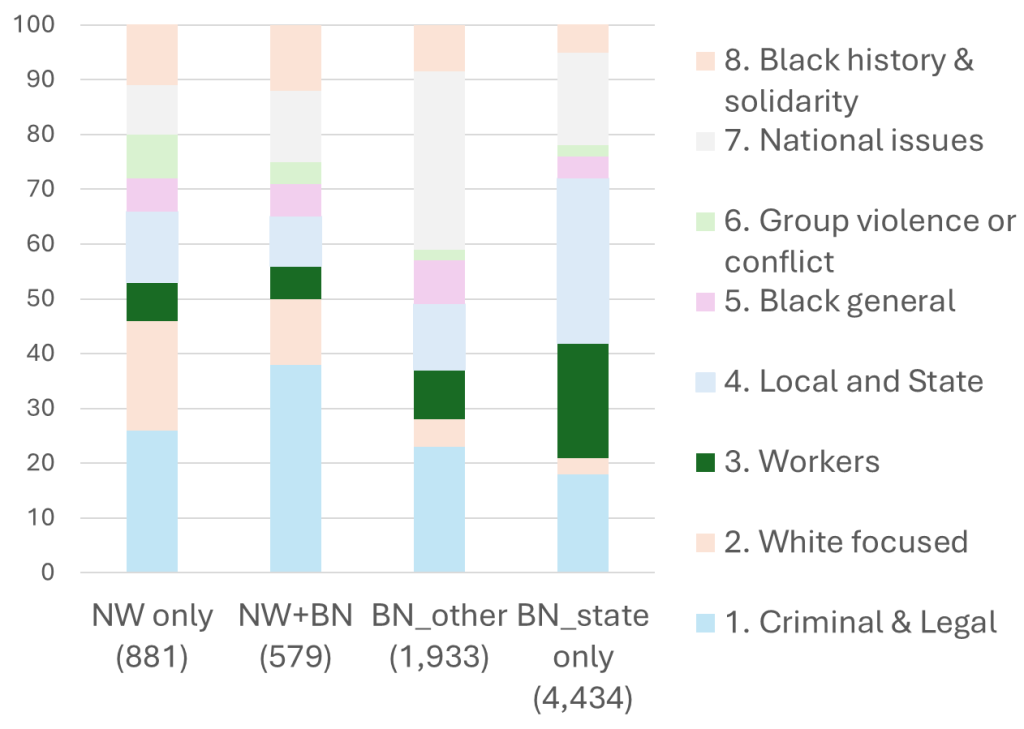
It is not surprising that “local” Black newspapers would give substantial attention to issues with a local or state focus.
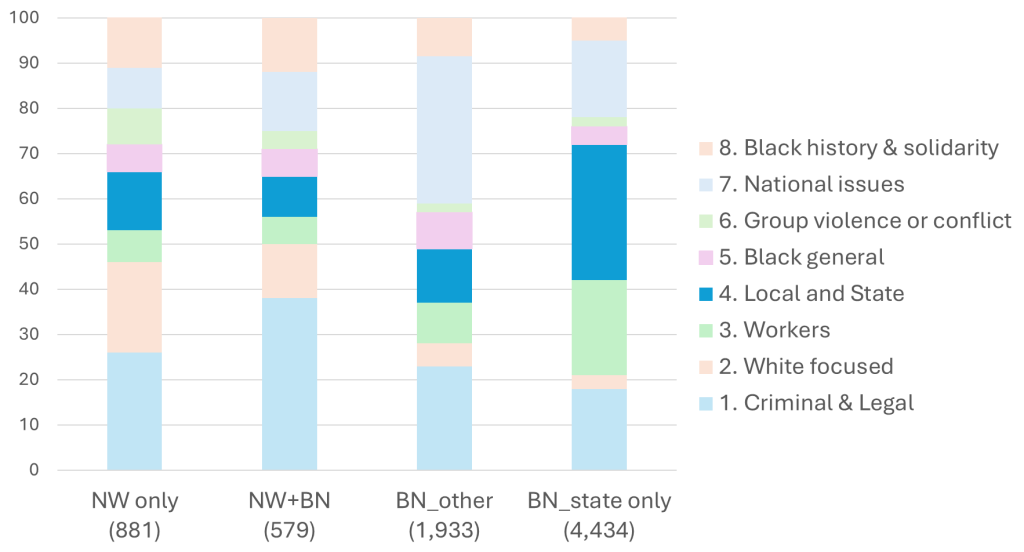
Looking more closely at which issues got a lot of attention from Black newspapers, we found a lot of attention given to cuts in funding for public services like hospitals, transit, social welfare, and a lot of attention given to school issues generally and specifically issues of public school funding or local control. The pie chart below is ONLY local Black newspaper coverage.
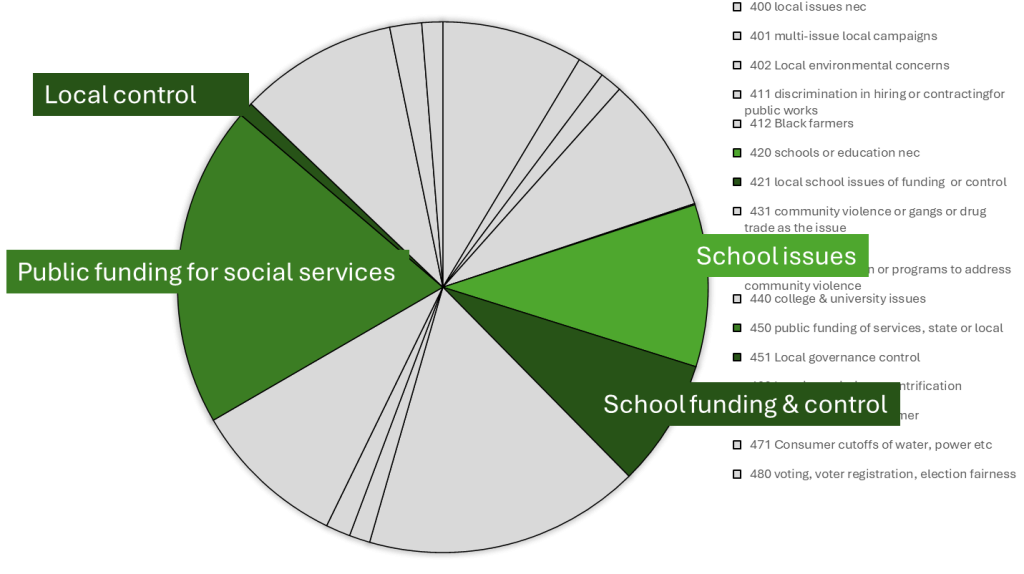
We also found, contrary to a typical White stereotype, that there were a lot of protests by Black people about local community violence, including “stop the killing” campaigns, protests against gun violence in the community, and protests about illegal drugs. These campaigns sometimes collaborated with local police.
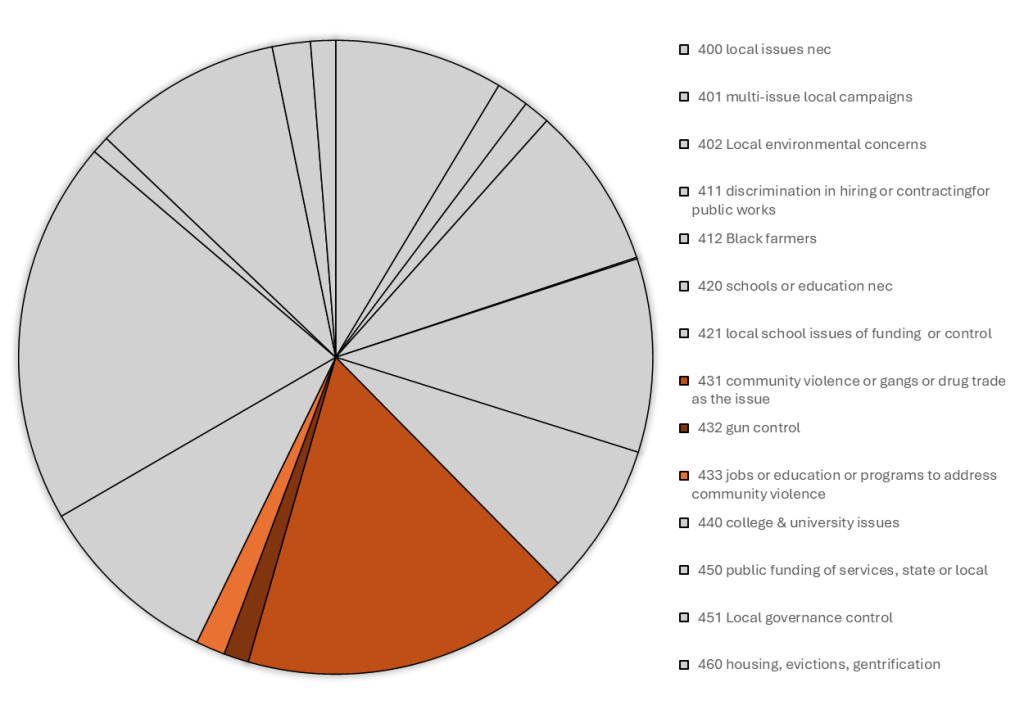
Other categories of local issues that had substantial representation in local Black newspaper coverage included housing, campaigns to have more Black workers in public building projects, and issues linked to a college or university. (Newswires also covered college and university issues.)
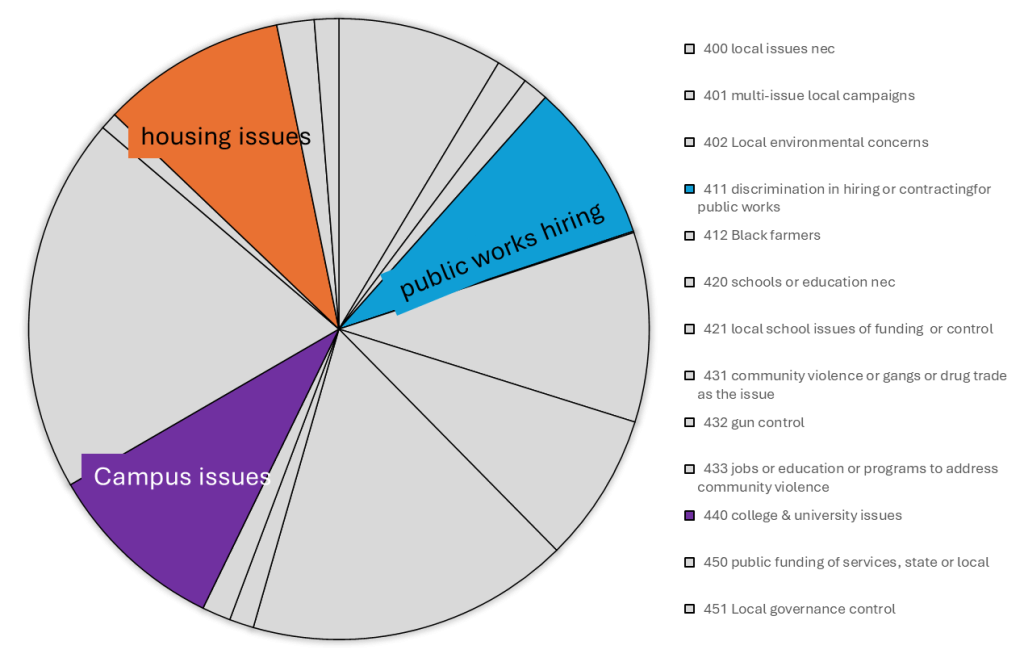
Black newspapers also gave substantial coverage to national issues that were not just Black-focused, especially in Black newspaper coverage of non-local events. Some of the difference may be due to the way we looked for events in the newswires, where we had additional screening for the words “Black” or “African American,” but Black newspapers still had a lot of coverage of national-level issues.
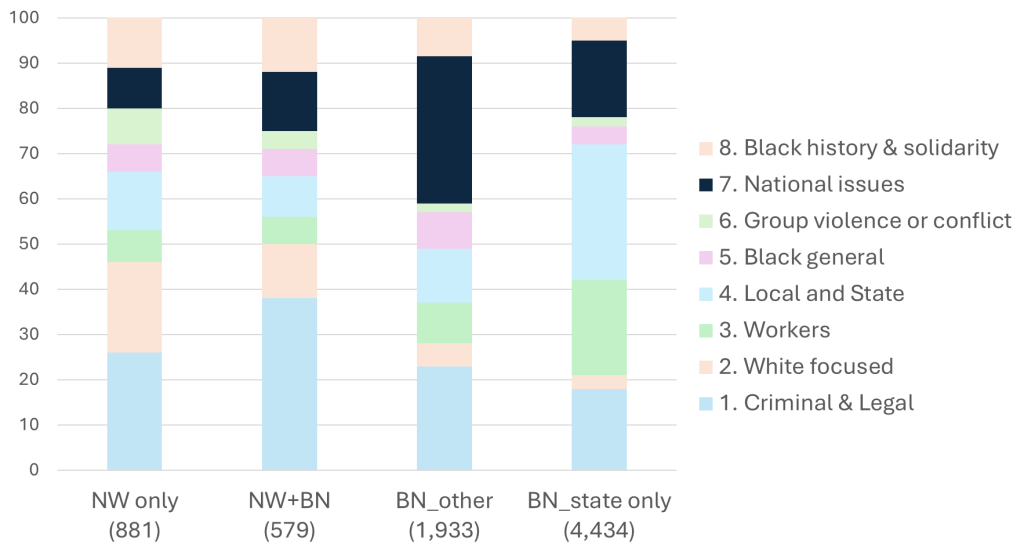
If we look at the specific issues, we see that Black newspapers gave a great deal of coverage to the Iraq War. They also gave substantial coverage to immigration, Haiti and Haitians, and the policies of other countries, especially Black-majority countries. Newswire coverage of Black involvement in national issues emphasize immigration, national politics, and national elections.
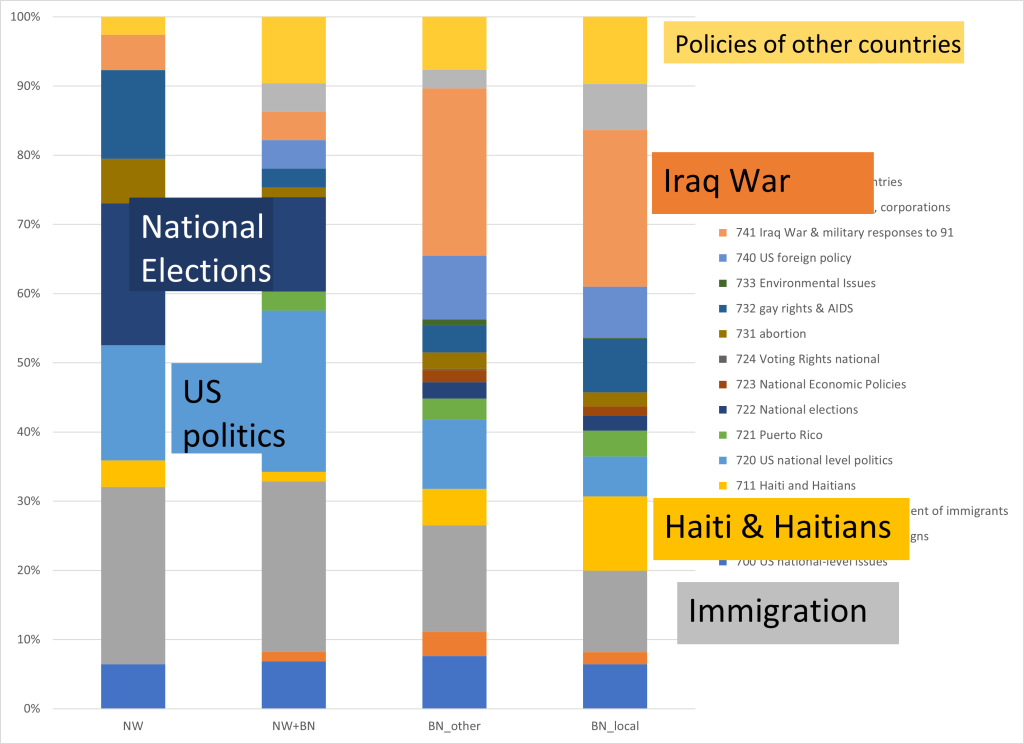
Overall, your image of Black collective action is much more diverse and varied when you draw it from Black newspapers than from mainstream newswires. We are looking forward to exploring these issues more as our work progresses.
Paper:
“Comparing Coverage of Black Protests in Mainstream Newswires and Black Newspapers.” Pamela Oliver, Chaeyoon Lim, Anna Milewski, Erin Gaede. LINK to working paper.
This research was funded by NSF grants SES1423784, SES 1918342, and SES2214160. The project has relied on research assistance by Morgan Matthews, John Lemke, and David Skalinder.

